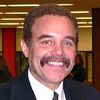Reports of college athletes who struggle with reading and coursework fill me with great sadness. But something in these stories feels familiar, too. I am an African American who also was challenged when I tried to learn to read. I remember how it felt in elementary school to be placed in the lower-designated reading groups, with names such as the "black birds."
Fortunately, I followed another path. I also know what these young people do not: Every child is born with sufficient intelligence to master reading and the higher-order thinking skills required to graduate from high school and college, and to succeed in the workplace. If we build on their strengths, all children can flourish. The problem is that we exploit their weaknesses instead.
It is a travesty that any student is allowed to graduate from high school and college without the literacy skills needed to prosper in today's society, but I would argue that it's especially galling to see athletes given short shrift.
Why? Their talents build the reputations of colleges and universities, drawing thousands to events that make millions for the schools. And consider what too many student athletes get out of the deal: unfulfilled visions of a professional career after high school or college. The coaches who encourage them to play know only a handful will make the big leagues. Meanwhile, school sports programs continue to attract as many athletes as possible, knowing that the larger the pool that participates in a given sport, the better it is for that sport overall. From this perspective, the system is akin to gladiator politics, with athletes pitted against each other, and only the strongest players surviving.
HBO's Real Sports with Bryant Gumbel shows the shattered dreams of a few former college stars, suggesting that after graduation, a number of them work in low-skilled, low-paying jobs. That's no surprise, when you consider how little practical training they receive in college. Gumbel reported that phony multi-interdisciplinary courses in "dance or yoga" and, rather than the rigorous African-American history courses many colleges and universities provide, dumbed-down African-American history classes maybe created with student athletes in mind. Colleges should not accept young athletes into their academic programs without also accepting the responsibility to give them high-quality instruction, so these students graduate with the skills they need.
The real tragedy is the lost opportunity for colleges to help change for the better the trajectory of college athletes' academic careers, even for those who were passed through deficient middle and high schools. While the brain is built in childhood, it is flexible throughout adulthood, with a neural plasticity that weaves experience into learning, as described in the seminal publication "Whither Opportunity?: Rising Inequality, Schools, and Children's Life Chances." Like a medieval cathedral, the brain is forever being repaired and restored, and can be modified during adulthood to adapt to new circumstances and grow new neural pathways.
But it takes work. Intellectual development can be optimized, as long as instruction is student-centered and challenging, connecting the subject matter to the student's frame of reference and allowing for student self-expression and feedback. Too many K-college programs are driven by the opposite: student weaknesses and efforts toward remediation. This marginalizes learning and gives rise to what has been called the "entity theory": the belief that intelligence is fixed and unchangeable. This influences students' beliefs about their own capabilities and can affect their motivation and goal-setting in school.
So it would seem for a number of college athletes. Rather than build on their strengths, literacy remediation programs ask these young adults to sound out letters as phonics as if they were in elementary school. This is demeaning, especially for adult students who may visually process words at an elementary or middle school level, but can comprehend spoken vocabulary that is much more complex.
The reality is that incredible work is being done with people who have far greater learning challenges. Eminent cognitive professor Reuven Feuerstein of Israel uses neuroscience-based programs to help people with brain damage, stroke survivors and children with Down syndrome, among others, rewire their brains and read at the highest levels of performance. The National Urban Alliance for Effective Education has worked with Feuerstein in this country as well as in Israel and France. NUA also was present when an architect who suffered brain damage because of stroke recovered with Feuerstein's help. The architect went on to build the prime minister's residence, despite being told by Harvard medical doctors that his career was over.
If these stories (and there are many more) are possible, then why can't we transform college programs to enable underperforming students to succeed? The answer is that we can. Programs can be implemented so every college athlete makes the grade academically. That way, even if they lose out on the playing field, every college athlete can -- and should -- win at the game of life.
Advertisement
